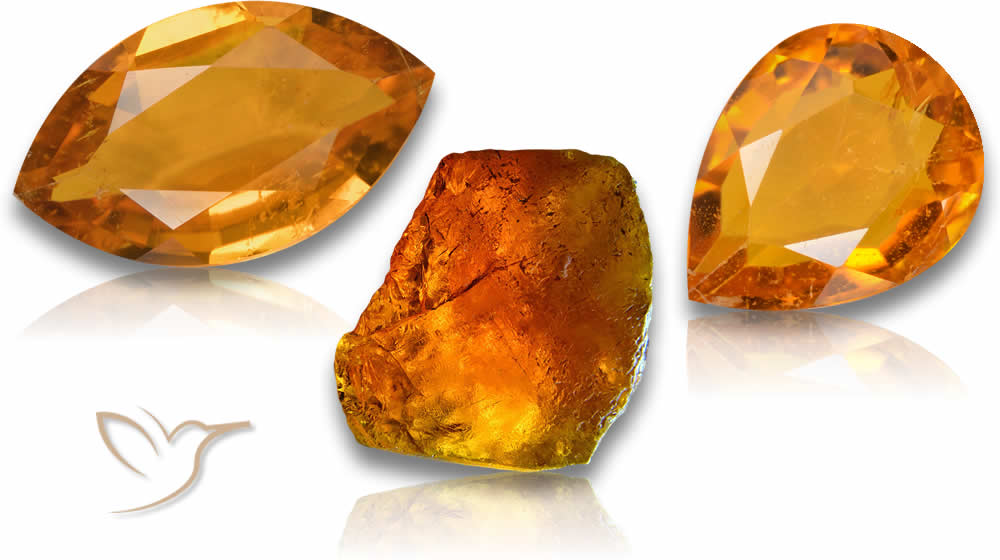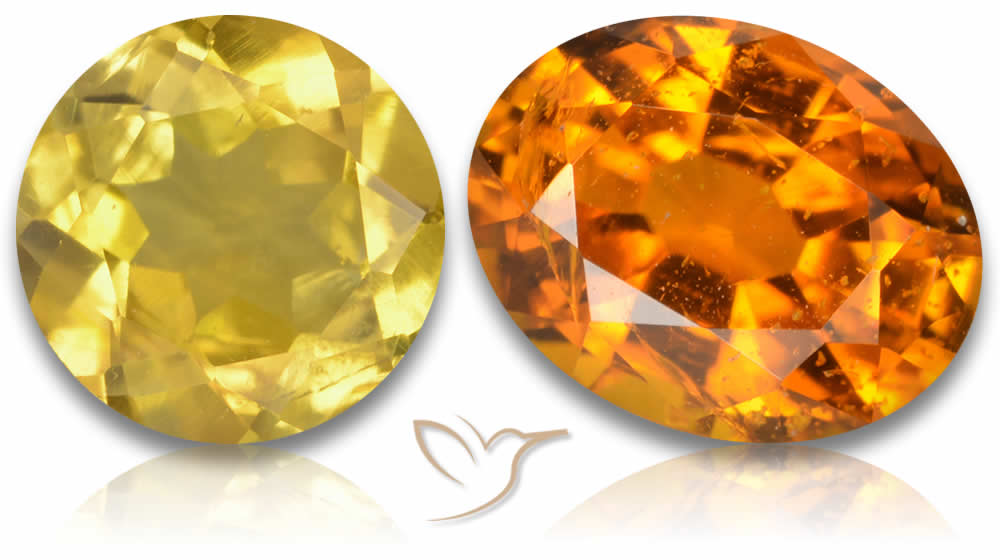Complete Guide to Clinohumite Gemstone Info

Welcome to our comprehensive guide to clinohumite gemstones! As experts in the field, we have researched and gathered valuable information on this rare gemstone. Here, we will share with you everything you need to know about clinohumite, including its unique characteristics, interesting facts, and metaphysical properties. Whether you are a collector, enthusiast, or simply curious about this stunning gemstone, we have got you covered.
Please view our stock of Clinohumite Gemstones for sale here.
Key Takeaways:
- Clinohumite is a fascinating gemstone with unique characteristics
- It comes in a range of beautiful colors, each with its own charm
- It is believed to possess powerful healing and metaphysical properties
- Clinohumite gemstones can be used in a variety of ways, from jewelry-making to spiritual practices
- Proper care and maintenance are essential for the longevity and beauty of your clinohumite gemstone
The Alluring Colors of Clinohumite Gemstones
Clinohumite gemstones are treasured for their remarkable beauty and come in a variety of captivating colors. The color of clinohumite is influenced by various factors, including its origin and unique composition.
The primary color of clinohumite is typically yellow, ranging from light lemon to golden hues. Other colors, including orange, brown, and green, can also be found, depending on the location of the gemstone's origin.
Kazakhstan is the most prominent location for finding clinohumite gemstones. The clinohumite from Kazakhstan typically exhibits a bright yellow hue and is often used for jewelry purposes.
Green, red, and brown hues of clinohumite are rarer but can be found in various regions worldwide, including the United States, Tanzania, and Afghanistan.
The stunning colors of clinohumite gemstones make them a sought-after addition to any jewelry collection. Whether set in a piece of jewelry or enjoyed as a standalone gemstone, clinohumite's vivid colors are sure to enchant and captivate.
Unearthing the Healing and Metaphysical Properties of Clinohumite
Clinohumite gemstones are more than just stunning pieces to add to your jewelry collection. Many believe that these precious stones possess powerful healing and metaphysical properties that can positively impact one's physical and mental well-being.
According to healers and gemstone enthusiasts, clinohumite is said to help relieve stress and anxiety, promoting calmness and a sense of inner peace. This gemstone is also believed to aid in improving digestion, boosting metabolism, and enhancing physical energy levels.
Metaphysically, clinohumite is thought to possess a strong connection to inner wisdom and intuition, promoting clarity, and encouraging one to trust their instincts. It is also believed to have a protective energy, shielding its wearer from negative energies and emotions.
Clinohumite gemstones have a rich history of use in alternative healing practices. In ancient times, healers used clinohumite to treat various ailments, including stomach disorders, liver problems, and respiratory issues. In recent times, gemstone therapists and holistic practitioners have incorporated this gemstone into their practices to promote physical and emotional healing.
| Healing Properties | Metaphysical Properties |
|---|---|
| Relieves stress and anxiety | Connects to inner wisdom and intuition |
| Improves digestion and metabolism | Encourages trust in instincts |
| Enhances physical energy levels | Has protective energy against negative emotions |
Clinohumite gemstones can be used in various ways to reap their benefits. They can be worn as jewelry, placed under a pillow, or carried in a pocket or purse. Experts recommend cleansing and charging your clinohumite gemstone regularly to maintain its healing properties.
In the following section, we will explore the different uses of clinohumite gemstones in jewelry and beyond, highlighting their versatility and beauty.
Utilizing Clinohumite Gemstones in Jewelry and Beyond
Clinohumite gemstones are one of the most versatile stones in the gemstone world. Their unique properties make them ideal for use in a variety of applications beyond jewelry. Here are some of the ways you can incorporate clinohumite into your life:
1. Jewelry
The most common use for clinohumite is in jewelry. The stunning colors and brilliance of this gemstone make it a popular choice for high-end jewelry designers. Clinohumite is often set in earrings, necklaces, bracelets, and rings to add a touch of elegance and glamour to any look. The orange and yellow varieties are especially popular.
2. Spiritual practice
Clinohumite gemstones are considered to have powerful spiritual properties and are often used in spiritual practices. They are said to promote positivity, calmness, and well-being. Some people carry clinohumite in their pockets or wear it as a talisman to promote good health and fortune.
3. Collecting
Clinohumite is a rare and valuable gemstone, and as such, it is sought after by collectors. Some collectors amass a large collection of clinohumite gems, while others own a single piece as a valuable investment.
4. Decorative applications
Due to its vibrant colors, clinohumite is also used in decorative applications. It is often used in tabletops, tiles, and decorative objects as an eye-catching accent. The unique colors and patterns inherent to each stone make them perfect for creating distinctive, one-of-a-kind designs.
5. Healing properties
Clinohumite is believed to have healing properties, and as such, it is used in holistic healing practices. The stone is said to promote relaxation, relieve stress, and improve sleep quality. It is often used in meditation practices as well.

In summary, clinohumite gemstones are a fascinating and versatile choice for those looking to incorporate gemstones into their lives. Whether you're looking for a stunning piece of jewelry, a powerful talisman, or a unique decorative accent, clinohumite has you covered.
Conclusion
We hope this complete guide to clinohumite gemstones has provided you with valuable information about this mesmerizing gemstone. When it comes to caring for your clinohumite gemstone, there are a few essential tips to keep in mind.
Firstly, it is crucial to protect your gemstone from any hard blows or scratches, as they can damage its surface. Secondly, avoid exposing your clinohumite gemstone to extreme heat or temperatures, as this can alter its color and structure.
To clean your clinohumite gemstone, you can gently wash it with mild soap and warm water, using a soft brush or cloth to remove any dirt or grime. Avoid using any harsh chemicals or cleaners that can damage your gemstone.
By following these simple care tips, you can enjoy the beauty and elegance of your clinohumite gemstone for years to come.
FAQ
What are the properties of clinohumite gemstones?
Clinohumite gemstones have a hardness of 6 on the Mohs scale, making them ideal for jewelry. They are known for their vitreous to greasy luster and a range of colors, including yellow, orange, brown, and green.
What is the meaning of clinohumite gemstones?
Clinohumite gemstones are believed to enhance creativity, bring joy and abundance, and promote overall well-being. They are also associated with boosting self-confidence and harmonizing relationships.
What are the uses of clinohumite gemstones?
Clinohumite gemstones are commonly used in jewelry, including rings, earrings, pendants, and bracelets. They can also be utilized in meditation practices, energy healing, and as spiritual tools to aid in manifestation and personal growth.
Where do clinohumite gemstones originate from?
Clinohumite gemstones are primarily found in deposits in Tajikistan, but they can also be sourced from Myanmar, Afghanistan, Russia, and the United States. The origin of the gemstone can influence its color and quality.
What are the healing and metaphysical properties of clinohumite gemstones?
Clinohumite gemstones are believed to have a range of healing properties, including promoting digestion, relieving stress and anxiety, and stimulating the immune system. They are also thought to enhance intuition, creativity, and spiritual growth.
How should I care for my clinohumite gemstone?
To care for your clinohumite gemstone, it is recommended to clean it using warm, soapy water and a soft brush. Avoid exposing it to harsh chemicals or extreme temperatures. Store it separately from other jewelry to prevent scratches.

